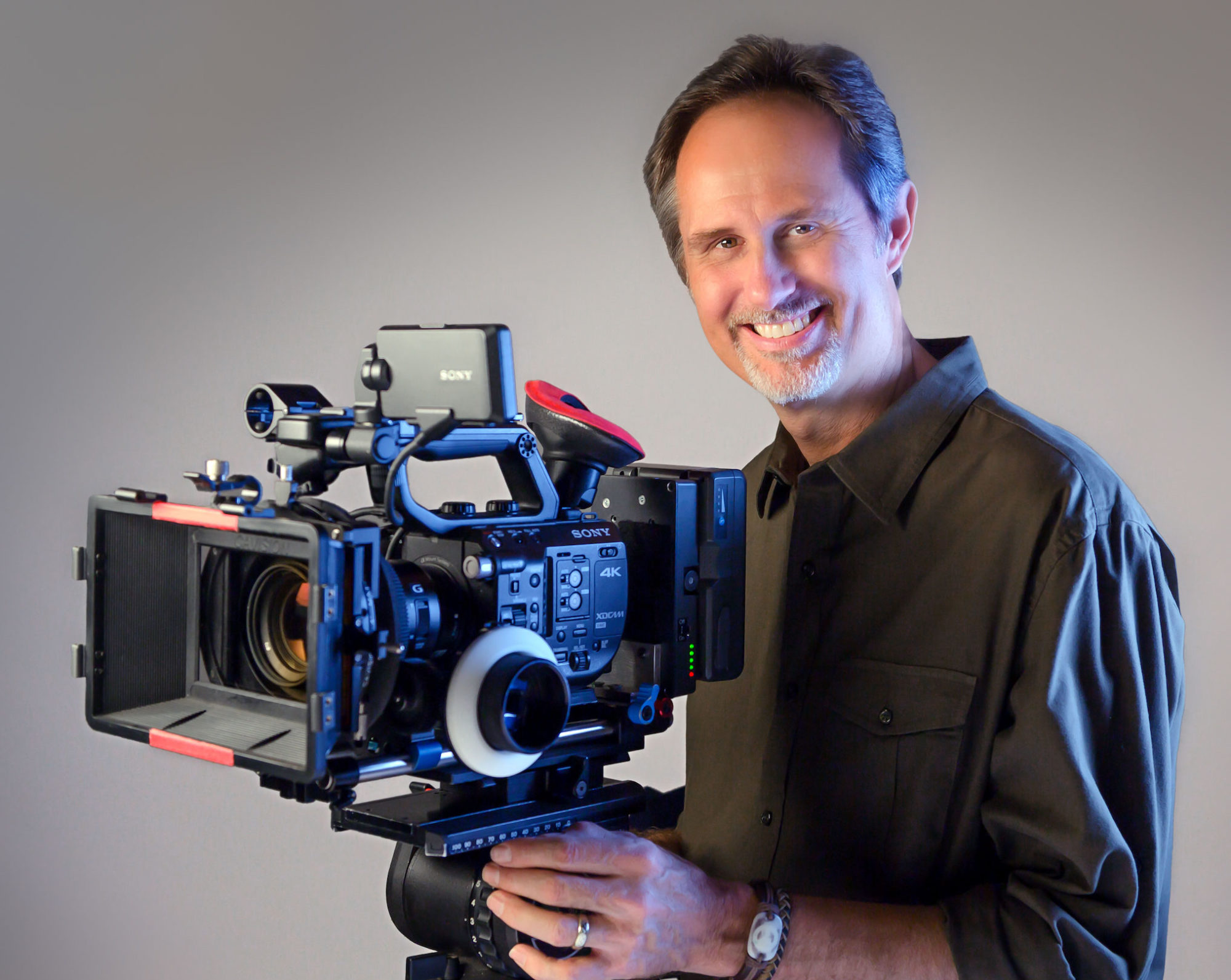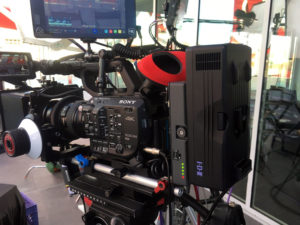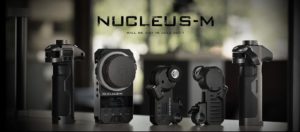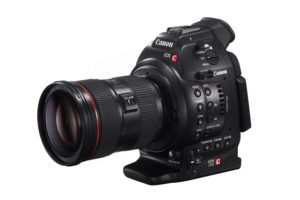Welcome to the new site of my blog here on WordPress
Enjoy!

Videographer
Welcome to the new site of my blog here on WordPress
Enjoy!
On the eve of NAB 2018 I wanted to pose the question: who is Kinefinity?
In the last few months I’m finally getting requests to shoot 4K. I love my Fs5 but wanted to look at additional camera options moving forward. I keep running into reviews and introductions to the Kinefinity Terra 4K. I remember the KineMINI from a few years ago but hadn’t really followed up on their progress – here’s my usual WOW! They have really put their foot on the gas in the last year.
Kinefinity seems to be on the right track ticking all the boxes for what independent film makers are looking for: 4K, ProRes, SSD media, interchangeable lens mounts, off the shelf batteries, good color science, price and the list goes on.
The Terra 4K and 6K have been getting good reviews by ProAV, Philip Bloom and others for several months. Now they have announced a full frame version called the MAVO slated for release later this year – very interesting.
The cameras appear to offer a host of accessories and rigging depending on the package you wish to buy:
The Kineback seems to be the real star as it offers XLR ports, SDI outputs and additional power taps. Other features are a EF lens adapter that has a built in electronic ND system similar to the electronic ND on the Sony Fs5.
The company is based in China and at the moment are the only point for purchase and service. However, ProAV in the UK are in the process of setting up a department to sell and service Kinefinity for the majority of the UK later this year. All work will be done locally and this will help cut down on the turn around time for sales and service.
Just my two cents on this NAB eve. If you have a chance to check out the Kinefinity booth, C11742 please post a comment and let me know what you think. I’d love to hear from you.
Until next time, good shooting and editing and grading,
I was able to work with a fantastic team to stream the announcement of Motor Trend’s “Car of the Year” award for Alfa Romeo. This happened during the recent LA Auto Show at the Petersen Auto Museum. The goal was to deliver the announcement world wide during the show week and present the award to the VIPs of Alfa Romeo. We streamed to Facebook and Periscope live and then immediately changed out the GFX skin and uploaded to YouTube.
The event was produced by Whitecoat Productions from NY and overseen by their executive producer Zach Stein. They chose the historic Petersen Auto Museum as the venue and the top floor terrace as the setting.
During pre-pro the plan was made to use 3 cameras; one wide CYA, a guest cam and a dedicated tight cam on the host. We used 2 Sony Fs5’s for the guests and host and then a Sony X70 for the wide. Jeff Killian of Ocean Motion Productions road herd on the camera dept and drove the host camera during the stream. They fed into a Tricaster provided by Take One Digital and pushed out to the world over a LAN connection and a bonded cell backup. Great job by Matt Worley as our TD and Stream Tech.
Sound was a bit of a challenge as the Petersen is right on Whilshire Blvd and had not one but two building construction projects going across the street in each direction. John Franco was our A1 and worked some real magic keeping the background noise to a minimum. He used a Dugan Automixer in the rig along with an Allen and Heath as the main desk.
Stan Garber and Mike Bryant handled all of our G&E for the project and made it look effortless. We were chasing the sun and trying to work in an interesting space to fit this all in. We flew a single 20x diffusion behind the talent to slow down the buildings in the distance and help blur the background.
Key lighting was several HMI’s shooting through 4×4 diff with cups and bungees to quiet them down and backlight was a pair of 4×4 shiny boards fired in from the far corners of the shot.
All in all it was a great 2 days. If you’d like to see the final product please check it out on Alfa Romeo’s channel on YouTube. It was a real pleasure working with everyone on the team and I hope to do it again real soon. Oh… in case you were wondering what I was doing, I helped put the crew together here on the west coast and then ran cameras 1 and 2 during the shoot…
Until next time, good shooting and editing and grading,
I found the lenses very easy to set up. Even adding the Duclos FZ adapter is pretty simple – you’ll need a jeweler’s screwdriver and a flat clean surface to work on. It takes about 3 minutes to swap the e-mount plate for the FZ mount. You might want to have some tiny shims on hand in case your lens is a little worn.
 So I recently had the opportunity to use the new IDX AC100 camera power supply on a project I was doing for Motor Trend. This is a nifty little clip on supply that fits in place of my V-mount battery on the back of my rig. The shoot was only going to be 15 minutes but we had a full day of install and rehearsal and then 2 hours of rehearsal and stream prep the day of the shoot. I didn’t want to be changing batteries every hour or two for the project so I thought I would try this solution-
So I recently had the opportunity to use the new IDX AC100 camera power supply on a project I was doing for Motor Trend. This is a nifty little clip on supply that fits in place of my V-mount battery on the back of my rig. The shoot was only going to be 15 minutes but we had a full day of install and rehearsal and then 2 hours of rehearsal and stream prep the day of the shoot. I didn’t want to be changing batteries every hour or two for the project so I thought I would try this solution-As you can see in the pictures, the supply is just slightly larger than my V-mount plate. It’s pretty light weight. The power cord that comes with the unit has a nice right angle connector that allows the cord to drop straight down from the supply. I was running my Sony Fs5, and the Atomos Shogun from the power supply with out any problems. It provides 100 watts at 14.5V@6.9AV constant.
 The bigger deal is how to add servo control to the Fujinon MK lenses… Awe a possible solution at Tilta! The new Nucleus-M system. This, for me, was the highlight of the show. This is a wireless “FIZ” with two motors, two handles and a controller for $1200 US. Ultimately it is a 6 channel system but in reality you would most likely use it for zoom and focus on a gimbal or drone. It is all wireless except for one power cable to the first motor and then a daisy-chain jumper cable looping power to the next motor. They are going to let me check the prototype out in their office in a week or so – stay tuned for an update.
The bigger deal is how to add servo control to the Fujinon MK lenses… Awe a possible solution at Tilta! The new Nucleus-M system. This, for me, was the highlight of the show. This is a wireless “FIZ” with two motors, two handles and a controller for $1200 US. Ultimately it is a 6 channel system but in reality you would most likely use it for zoom and focus on a gimbal or drone. It is all wireless except for one power cable to the first motor and then a daisy-chain jumper cable looping power to the next motor. They are going to let me check the prototype out in their office in a week or so – stay tuned for an update. We shot on a pair of Canon C100 cameras and had a Sony Fs5 for the CYA. I have to say I am getting more and more intrigued with these cameras. I was born and raised Sony and have owned more than my fair share of them over the last 25 years. But as the DP, Dave Hunter put it, “the Canon look just works”. He lit the interview with 2 Diva 400’s double dipping each unit as back and key. We placed a Sennheiser wireless LAV on each person and those went straight into the cameras A to A, B to B. After the interview we took the C100’s around to the FOH position and shot some B-roll of Robert showing us the board layout and Mix position config – Very cool!!
We shot on a pair of Canon C100 cameras and had a Sony Fs5 for the CYA. I have to say I am getting more and more intrigued with these cameras. I was born and raised Sony and have owned more than my fair share of them over the last 25 years. But as the DP, Dave Hunter put it, “the Canon look just works”. He lit the interview with 2 Diva 400’s double dipping each unit as back and key. We placed a Sennheiser wireless LAV on each person and those went straight into the cameras A to A, B to B. After the interview we took the C100’s around to the FOH position and shot some B-roll of Robert showing us the board layout and Mix position config – Very cool!!
Part 2:
So we did the shoot out with the other cameras and it turned out pretty well. We set all three cameras up with the green screen. We tried Sony lenses and Canon L series lenses along with a pair of B4 ENG lenses – one SD and one HD. As for the B4 glass, we found very little difference to the eye when viewing on a 20″ JVC broadcast LCD monitor.
The Sony lenses, a 24-70 ƒ4, a 16-35 ƒ4 and a 70-200 ƒ4 worked very nicely. Auto focus worked as expected and face tracking on the wider lenses was remarkably accurate. The Canon glass looked very sharp as well. The iris control through a Metbones Mk IV adapter was quite good. I was having a little trouble (probably OE again) getting the camera to use auto focus with the canon glass.
The kit 18-105 lens from the Fs5 worked on the A7s which was fun. But the zoom function was a little lacking with the A7s’ remote. We tried a LANC remote via and adapter and it was still a little on the unhappy side.
More info soon… Stay tuned